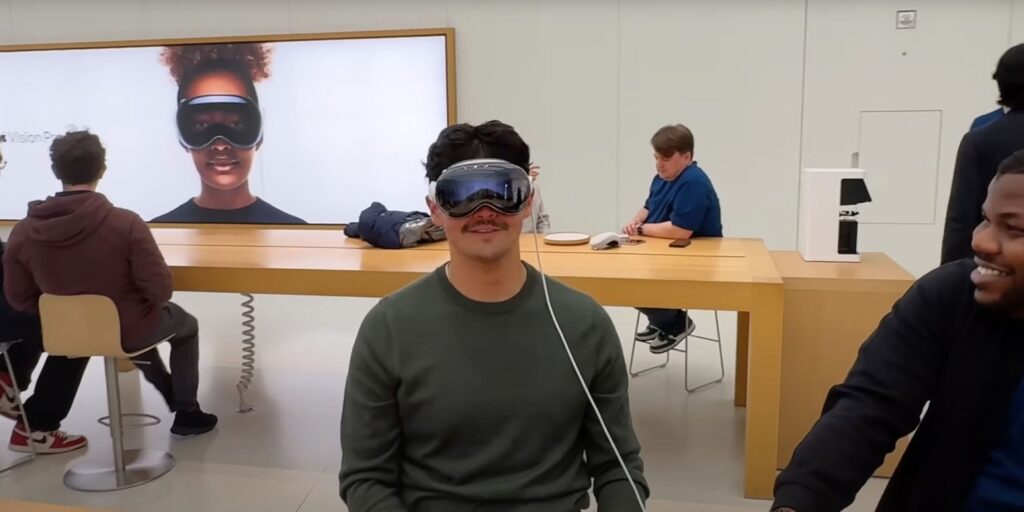When buzzy new consumer tech products launch, early return rates offer valuable adoption signals predicting hits versus gimmicky flames outs.
For Apple’s new Vision Pro virtual reality headset, some reports painted dire return scenarios suggesting modest interest given high $1500 entry pricing.
However a new investigation by Apple Insider exploring multiple east coast US retail locations reveals less worrying momentum for this ambitious device.
Analyzing Apple Vision Pro Early Adopter Returns
Initial mainstream tech press narratives warned of overwhelming buyer’s remorse fueled returns blindsiding Apple Store locations.
But AppleInsider’s anonymous sources disputed such pessimism. According to insights across two dozen stores:
- No “cataclysmic flood” of headset returns materialized so far
- Current rates seem comparable to other new Apple product launches
Of course, some early purchasers inevitably experience second thoughts reacting to sticker shock or discovering minor hardware quirks triggers swift remorse after the “new gadget” novelty wears thin.

Why Return Rate Reports Mislead
Context matters deciphering meaning from return data points. Specifically, early adopters willing paying premium prices rush purchasing emerging technologies ahead of mass market curves.
This niche buyer segment tends exhibiting extra patience around initial growing pains anticipated with version one hardware and software ecosystem limitations.
Additionally, Apple’s historically strict return policies likely deter more casual mainstream consumer headset curiosity for now. Thus discouraging lightly-considered purchases in favor of committed enthusiasts helps skewing data.
Additional Perspective Beyond Just Statistics
While monitoring sales metrics proves important, qualitative user experience factors better predict longer-term success trajectories.
On this front, the Apple Vision Pro sees positives across several fronts including:
- Widely commended picture quality and user interface polish
- Key developer commitments creating compelling VR content
- Apple’s proven track record iteratively improving products over time
If early returns seem lower than feared alongside promising elements above, optimism exists the Vision Pro hits stride matching ambition with execution.
What Reviewers and Analysts Think of the Vision Pro
Enthusiastic initial reviewer appraisal bodes well securing the content and app ecosystem needed sparking wider appeal. Respected voices deem its strengths worthy of refinement despite expected first-gen hiccups:
“Shows the promise of the technology and where developers think it’s headed.”
– Joanna Stern, Wall Street Journal
Likewise, financial analysts praise the Vision Pro nuclear reactor-like powerplant housing the aggressive processing muscle necessary fueling graphics capabilities aligned with Apple’s uncompromising standards.
This pure horsepower fills essential enabling more demanding functionality called upon as VR/AR matures into whatever phase Apple envisions beyond just gaming distraction.
Vision Pro Pricing and Content Hurdles
Still, make no mistake – at $1500 positioned clearly premium, Apple faces attracting mainstream buyers absent bigger incorporated app/game libraries and improved hardware.
The device in no way approaches iPhone-esque accessibility yet. But Apple possesses patience playing long-run chess matches building categories to domineering scale through calculated roadmap execution.
RememberReaction pieces just two months post-launch hardly indicate enduring trajectory strength alone.
Apple’s Future Vision Pro Efforts
Expect Apple mitigating current shortcomings over successive product iterations by:
- Subsidizing development costs to attract expanded VR content
- Iterating comfort and weight distribution for improved wearability
- Likely lowering price ceilings expanding TAM
With rumors suggesting a lower-cost model emerges potentially by 2024, Apple seems committed maturing its spatial computing vision through years of progress still required achieving ubiquity.
For now, resilient early adoption against return rate fears seems an encouraging signal. But execution remains vital realizing full disruptive potential.










Add Comment